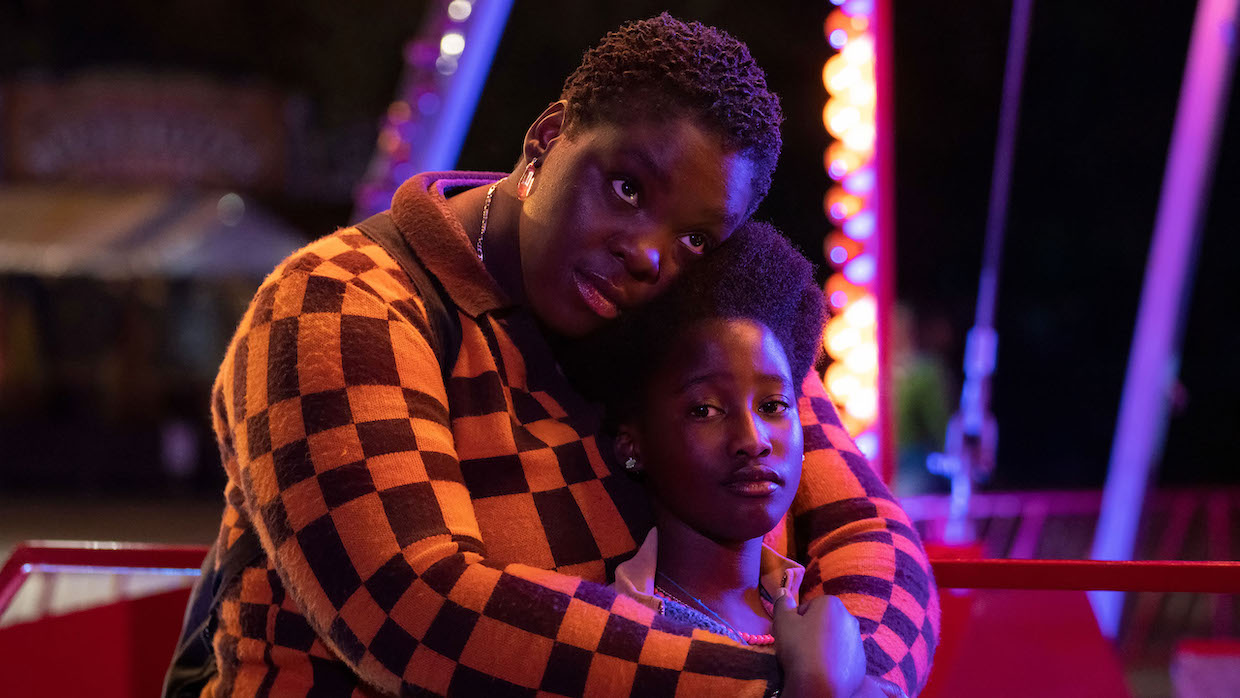 Back to selection
Back to selection
“The Opposite To Many Depictions of Glasgow”: DP Tasha Back on Girl
 Girl, courtesy of Sundance Institute.
Girl, courtesy of Sundance Institute. In Girl, the feature debut from writer-director Adura Onashile, 11-year-old Ama (Le’Shantey Bonsu) begins to pull away from the co-dependent relationship fostered by her loving 24-year-old mother Grace (Déborah Lukumuena). This instantly drives a wedge between them, one that will only pull them further apart if Grace doesn’t come to terms with a traumatizing incident that occurred before her daughter’s birth.
DP Tasha Back discusses the important of color in the film and how she achieved the film’s distinctly un-drab look.
See all responses to our annual Sundance cinematographer interviews here.
Filmmaker: How and why did you wind up being the cinematographer of your film? What were the factors and attributes that led to your being hired for this job?
Back: I was drawn to the script because it was so visual. The descriptions of the world through Ama’s eyes implied the visual poetry would be a big part of making the film powerful and magical.
Filmmaker: What were your artistic goals on this film, and how did you realize them? How did you want your cinematography to enhance the film’s storytelling and treatment of its characters?
Back: [Director] Adura [Onashile] and I were keen for the film to be bold with color; we wanted the characters’ world to be the opposite to many depictions of Glasgow housing estates we had seen that were drab and depressing. We wanted an intimacy with the characters where the camera really connected with them.
Filmmaker: Were there any specific influences on your cinematography, whether they be other films, or visual art, or photography, or something else?
Back: Adura and I were drawn to references that used strong and beautiful color tones to create poetic imagery like Kahil Joseph’s films Until the Quiet Comes, Process and Lemonade, and Barry Jenkins and James Laxton’s work on Moonlight.
Filmmaker: What were the biggest challenges posed by production to those goals?
Back: The film was made during COVID and in a time when the UK was experiencing a surge in film and TV productions, meaning there was a crew shortage. It was hard for a small indie film shooting at this time for both those reasons. Access to locations was hard because of COVID restrictions and we were very lucky to get access to the estate we shot on in central Glasgow which had the most stunning views of the city.
Filmmaker: What camera did you shoot on? Why did you choose the camera that you did? What lenses did you use?
Back: I used the [ARRI] ALEXA Mini and chose Cooke Anamorphic lenses. Adura was keen to find a magical look for the world Grace and Ama exist in but without it looking too unreal. I chose the Cookes because they felt like a good balance. By shooting wide open and leaning into the distortion of the edges of the lens I could have a more dreamlike look for certain scenes if required. We also used diopters for a lot of scenes where we wanted to be intimate with Ama and see the world through her eyes.
Filmmaker: Describe your approach to lighting.
Back: Color was a major part of the lighting choices. I used RGB sources wherever I could to build color into the scenes. My Gaffer Paul Joy and I worked closely with the Production Designer Soraya Giliani Viljoen to use practical sources in every set and compliment the color choices she had made. I had many conversations with Soraya about textures, reflective surfaces and window dressings. These things are such a big part of lighting and the effect light has in a room and the way it falls. In the studio we used a mixture of RGB and tungsten sources through the windows, bounced and/or diffused using a mixture of muslin and the textiles provided by Soraya.
Filmmaker: What was the most difficult scene to realize and why? And how did you do it?
Back: The scenes filmed at the main housing estate in Glasgow were hard logistically. We needed access to many different parts of the estate for lighting which was hard during COVID and with a small team. The views Ama has at night of the other flats and during the fire were carefully constructed with the sparks in one block of flats setting lights and myself and my Gaffer Paul in the opposite block controlling the lights remotely to set colors and levels.
Filmmaker: Finally, describe the finishing of the film. How much of your look was “baked in” versus realized in the DI?
Back: I used a LUT on set which my colorist Simone Gratterola had adjusted for the film prior to shooting and then he and I had a few sessions to set a look prior to the final grade. We had discussions on set with my DIT James Hogarth about where the final grade was going to go and Simone adjusted stills grabs throughout the shoot so we could keep track of where we wanted to go with the final look. I think there is no doubt the color on this film is a really strong element of the visual language, and one thing I’m really proud of in the film. It was a wonderful collaboration between Soraya’s sets, Kirsty’s costumes, the lighting and Simone’s grade.
TECH BOX
Film Title: Girl
Camera: Alexa Mini
Lenses: Cooke Anamorphic
Lighting: Panalux
Processing: Open Gate 3.4 Anamorphic Raw
Color Grading: Davinci Resolve
